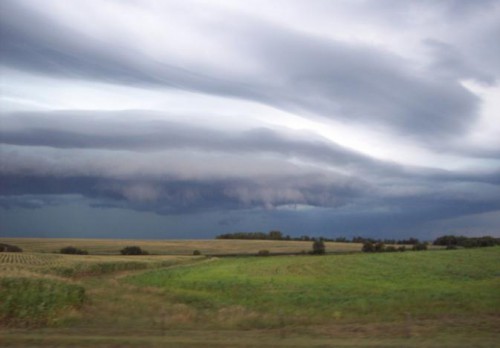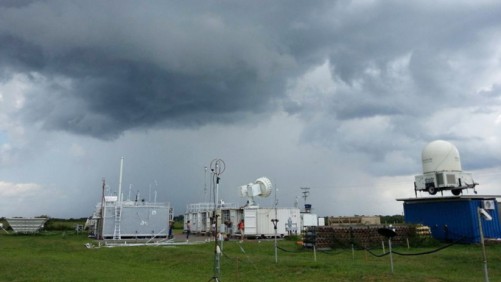JANUARY 25, 2018

A new study conducted jointly by Professor Daniel Rosenfeld of The Hebrew University of Jerusalem’s Institute of Earth Sciences and American researcher Dr. Jiwen Fan of the Department of Energy’s Pacific Northwest National Laboratory, has concluded that even the tiniest of man-emitted particles, much smaller than previously thought, is powerful enough to cause severe crop-damaging weather.
The study examined the impact of aerosols– particles that are less than one-thousandth of the width of a human hair– on phenomena such as soil erosion and water runoff. The study was conducted in the Amazon, a setting that allowed the researchers to accurately observe the effects of these tiny aerosol particles which can come from urban and industrial air pollution, wildfires and other sources. While scientists have known that aerosols may play an important role in shaping weather and climate, the new study shows that the smallest of particles have an outsize effect.
The tiny pollutants – long considered too small to have much impact on droplet formation – are, in effect, diminutive downpour-makers.
“We showed that the presence of these particles is one reason why some storms become so strong and produce so much rain,” said Dr. Jiwen Fan of the Department of Energy’s Pacific Northwest National Laboratory. “In a warm and humid area where atmospheric conditions are otherwise very clean, the intrusion of very small particles can make quite an impact.”
Through detailed computer simulations, it was shown how the smaller particles have a powerful impact on storm clouds. It turns out that when larger particles aren’t present high in a warm and humid environment, it spells opportunity for the smaller particles to act and form cloud droplets. The low concentration of large particles contributes to high levels of excessive water vapor, with relative humidity that can go well beyond 100%. That’s a key condition spurring ultrafine particles to transform into cloud droplets.
While the particles are small in size, they are large in number, and they can form many small droplets on which the excess water vapor condenses. That enhanced condensation releases more heat, and that heat makes the updrafts much more powerful: More warm air is pulled into the clouds, pulling more droplets aloft and producing more ice and snow pellets, lightning, and rain. Significantly, this heavier downpour often leads to soil erosion and crop damage, affecting the lives and livelihoods of those living in the affected areas.
“We’ve shown that under clean and humid conditions, like those that exist over the ocean and some land in the tropics, tiny aerosols have a big impact on weather and climate and can intensify storms a great deal,” said Fan, an expert on the effects of pollution on storms and weather. “More broadly, the results suggest that from pre-industrial to the present day, human activity possibly may have changed storms in these regions in powerful ways.”
Professor Daniel Rosenfeld of The Hebrew University of Jerusalem’s Institute of Earth Sciences added, “This groundbreaking research strongly suggests that mankind has likely altered the rainfall and weather in densely populated tropical and summer monsoon areas such as India, Southeast Asia, Indonesia, and even southeastern USA.”

Air pollution and weather observatory station in the Amazon
Read the source articles:
Tiny Particles Have Outsize Impact on Precipitation
New US-Israeli study shows how tiny man-emitted particles affect weather, crops
Tiniest emission particles may lead to big storms: study
Pollution’s impact on weather, crops worse than once thought